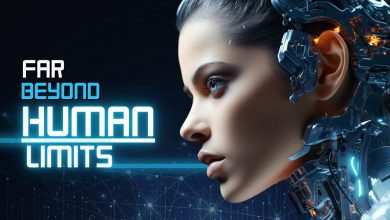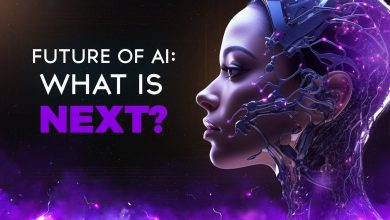How Neuralink Will Enable Merging of Humans with AI
This groundbreaking technology has the potential to revolutionize the way we interact with machines and enhance our cognitive abilities.
 Neuralink, the brain-computer interface company founded by Elon Musk, has been making waves in the tech industry with its ambitious goal of merging humans with artificial intelligence (AI).
Neuralink, the brain-computer interface company founded by Elon Musk, has been making waves in the tech industry with its ambitious goal of merging humans with artificial intelligence (AI).
This groundbreaking technology has the potential to revolutionize the way we interact with machines and enhance our cognitive abilities.
As the Guardian reports, Elon Musk, Neuralink’s billionaire founder, said the first human received an implant from the brain-chip startup on Sunday and is recovering well.
The startup’s Prime study is a trial for its wireless brain-computer interface to evaluate the safety of the implant and surgical robot. The study will assess the functionality of the interface, which enables people with quadriplegia, or paralysis of all four limbs, to control devices with their thoughts.
The first human received an implant from @Neuralink yesterday and is recovering well.
Initial results show promising neuron spike detection.
— Elon Musk (@elonmusk) January 29, 2024
Neuralink
Neuralink is a neurotechnology company that aims to develop implantable brain-machine interfaces (BMIs) capable of connecting human brains with computers. The company’s ultimate goal is to enable a symbiotic relationship between humans and AI, allowing for seamless integration of artificial intelligence into our daily lives.
Neuralink’s technology involves implanting tiny, flexible electrode threads into the brain, which can detect and stimulate neural activity. These threads are connected to a small device called the “Link,” which sits behind the ear and wirelessly communicates with external devices.
The Link acts as a bridge between the brain and AI systems, allowing for bidirectional communication. It can transmit information from the brain to external devices, such as computers or smartphones, and also receive information from these devices to stimulate specific areas of the brain.
Benefits of Merging Humans with AI
The merging of humans with AI through Neuralink has the potential to unlock numerous benefits:
- Enhanced Cognitive Abilities: By connecting our brains directly to AI systems, we can access vast amounts of information and computational power, significantly enhancing our cognitive abilities.
- Improved Health and Accessibility: Neuralink could revolutionize healthcare by enabling precise control and monitoring of neural activity. It could also provide new solutions for individuals with disabilities, allowing them to regain lost functionalities.
- Efficient Brain-Machine Interaction: With Neuralink, the interaction between humans and machines could become more seamless and intuitive. Tasks that currently require physical input devices could be performed directly through neural signals.
- Accelerated Research and Innovation: The ability to tap into AI systems directly from our brains could accelerate scientific research and innovation, leading to breakthroughs in various fields, including medicine, engineering, and artificial intelligence itself.
Challenges and Ethical Considerations
While the merging of humans with AI holds immense potential, it also raises significant challenges and ethical considerations:
- Privacy and Security: The direct connection between our brains and external devices raises concerns about privacy and data security. Safeguarding personal information and preventing unauthorized access will be crucial.
- Equity and Accessibility: The widespread adoption of Neuralink could exacerbate existing inequalities, as access to this technology may be limited to those who can afford it. Ensuring equitable access and addressing potential societal divisions will be essential.
- Unintended Consequences: As with any emerging technology, there is a need to carefully consider the potential unintended consequences of merging humans with AI. Ethical frameworks and regulations must be in place to mitigate risks and protect individuals.
Conclusion
Neuralink’s vision of merging humans with AI represents a significant leap forward in human augmentation and the integration of artificial intelligence into our daily lives. While the technology holds immense promise, it also poses challenges that need to be addressed to ensure its responsible and ethical development.
As Neuralink continues to push the boundaries of what is possible, it is crucial for society to engage in thoughtful discussions and establish guidelines that promote the responsible and beneficial use of this groundbreaking technology.



